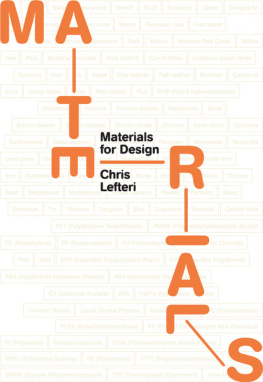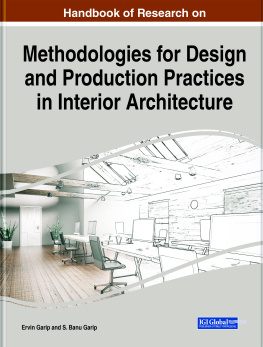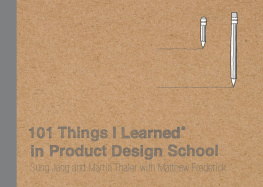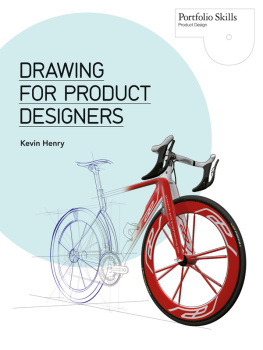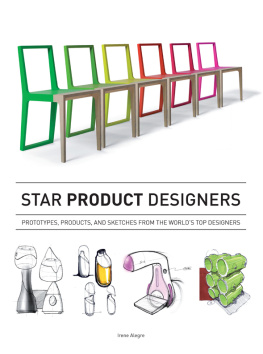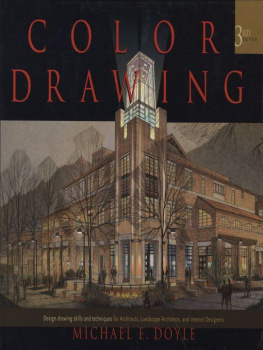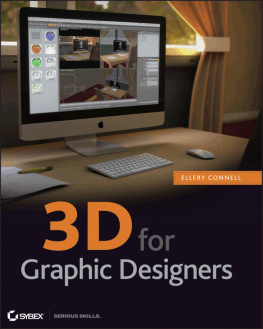Making It
Making It
Manufacturing Techniques for Product Design
Laurence King Publishing
For Jerome, our treasure

Copyright 2012 Central Saint Martins College of Art & Design, The University of the Arts London First published in Great Britain in 2007.
Second edition published 2012 by Laurence King Publishing in association with Central Saint Martins College of Art & Design
This book has been produced by Central Saint Martins Book Creation, Southampton Row, London WC1B 4AP, UK
Laurence King Publishing Ltd
361373 City Road
London EC1V 1LR
United Kingdom
Tel: + 44 20 7841 6900
Fax: + 44 20 7841 6910
e-mail:
www.laurenceking.com
All rights reserved. No part of this publication may be reproduced or transmitted in any form or by any means, electronic or mechanical, including photocopy, recording, or any information storage and retrieval system, without prior permission in writing from the publisher.
A catalog record for this book is available from the British Library
ISBN: 978-1-85669-749-1
Design: Roger Fawcett-Tang, Struktur Design
Cover design: Marianne Noble
Senior editors: Peter Jones,
Jessica Spencer (2007 edition)
Picture research: Jennifer Hudson, Lucy Macmillan
Printed in China
Contents
Introduction
We are drawn to the unknown, to uncovering secrets, and to unearthing the unseen nature of the modern worldfrom childhood TV shows that peer through the windows of factories looking at lines of chocolate cookies and milk bottles being made, to cottage industries that reveal to tourists the production methods of indigenous craftsman, even down to DVD bonus features that entertain us with how filmmakers cheat reality with special effects. Designers in particular are constantly looking for new ways to transform both old and new technologies and to apply them within the design arena.
The invention of machines that are used to turn out two thousand lightbulbs per minute or ultrafine flexible fiber optic cables has always amazed me and how they came into being. What kind of creative mind would have conceived the process that requires hot, sticky, molten glass to be suspended from a tower and dropped at a slow rate, stretching into tubes of glass less than 1/25 inch thick to create an optical glass fiber; or that contorts steel wire into the iconic Gem paper clip at a rate of 300 per minute; or the process that makes glass marbles with those swirly patterns of color, each with its own pattern? But these uniquely formed products are each specific to their own production process and are for another book. Instead this book presents those methods that are relevant to the production of any given object, in a nutshell those that are relevant to industrial design.
Since the publication of the highly successful first edition of Making It there have been many innovations in the world of production, a selection of which has been added to this new updated edition. Some are highly specialized, such as electromagnetic forming, some are old methods re-evaluated, such as Industrial Origami, and others combine two processes, such as Exjection, a method of making that combines injection molding and extrusion. There have also been some notable uses of established production methods, such as Marcel Wanders Sparkling Chair, which upscales injection blow molding from the plastic bottle industry and applies it to the making of a piece of furniture.
There is a growing momentum for a more sustainable approach to design. In order to address the increasing importance of energy use, material scarcity, and ethical production I have also added details that will give the reader an introduction to some of these complex areas and key points of consideration. In addition there is also a major new section on finishing techniques, as one of the most common ways is to innovate by coloring, painting, spraying, growing, or adding functionality to a component. The chart on pages 10 to 13 provides an at-a-glance overview of major factors such as volumes of production and cost for each technique that will give the reader a straightforward comparison and quick reference guide to these key pieces of information.
As stated, the aim of this book is to explore the hidden side of objects within the context of industrial design. To peer into the world of machines and the often creative and inspired ways that they have been assembled to morph liquids, solids, sheets, powders, and hunks of metal into three-dimensional products. To examine these pieces of theater in a way that has not been presented before in a book. To try and communicate what is an inherent playfulness that is evident in mass production. To encourage the abduction of some of these methods by designers to make better products and to exploit production as part of the creative process rather than as a means to an end.
My intention was to take all the information that exists in technical manuals, trade journals, and websites for associations and federations in the engineering sectors and to encapsulate it in a guide for the designer that would be a relevant introduction to the world of the manufactured object. In one sense to celebrate all the relevant methods of mass- and batch production for the three-dimensional object at this particularly important crossroads in the evolution of objects. This is a time when old ideas of manufacturing are being re-evaluated by the design industry and new possibilities are surfacing, which have the potential to alter dramatically the way we make, choose, and consume our products. It used to be the case that design was the slave to manufacturing, restricting creativity, molding constraints and costs. In many cases this is still true but increasingly manufacturing is seen as a tool for designing new opportunities to bring new materials and ideas to new methods of production, and to experiment with preconceived volumes of production.
Some of the examples featured in this book reflect a stage of development where the new tools of designers and makers are not physical tools but factory setups. Take, for example, Malcolm Jordans Curvy Composites, a degree-show design project that resulted in a completely new way of forming wood. I couldnt resist also including some of the more offbeat processes that perhaps dont really fit into the realm of the mass-produced object but help point the way to a new direction, ideas that take a type of industrial production and combine it with a craftlike approach, projects that take small-scale, widely available machines and reuse them.
Before the Industrial Revolution the crafting of objects was often influenced by surrounding geography. Ceramics, for example, were designed and made in areas where there was an abundance of clay, such as Stoke-On-Trent in the northwest of England, the birthplace of Wedgwood and countless other ceramics factories. Places with large areas of woodland often had communities that specialized in furniture production. Skills and materials came from specific local resources. The global economy has had consequences for local resources and has often destroyed communities, but now technology is taking production back to the small-scale craft user and placing it in the hands of the consumer. Sometimes this is intentional and driven by new products and technology, at other times it is driven by people abducting machines and using them for something for which they were not intended. The adaptation of the humble inkjet printer for rapid prototyping is one such example.
The reuse of this type of product or technology is a vital part of evolution: experimenting, mixing things up, and swapping them around, turning existing conventions on their head. Our insatiable appetite for making things races ahead at full speed. But if the old tools of craftsmanship were hand tools for shaping materials then the new tools of the craftsman are the machines. For around $100 you can buy an inkjet printer, take out the guts, and start playing with the workings and use CAD-driven data to produce a whole range of new things. When people first started making things they picked a lump of wood, understood its properties to a certain degree, and were able to chop it into a usable product. For some, the lump of wood has become the inkjet printer, a piece of technology that has been chopped up and generally messed about with to create a multitude of products.
Next page

